The Haunted House for Athletic Trainers
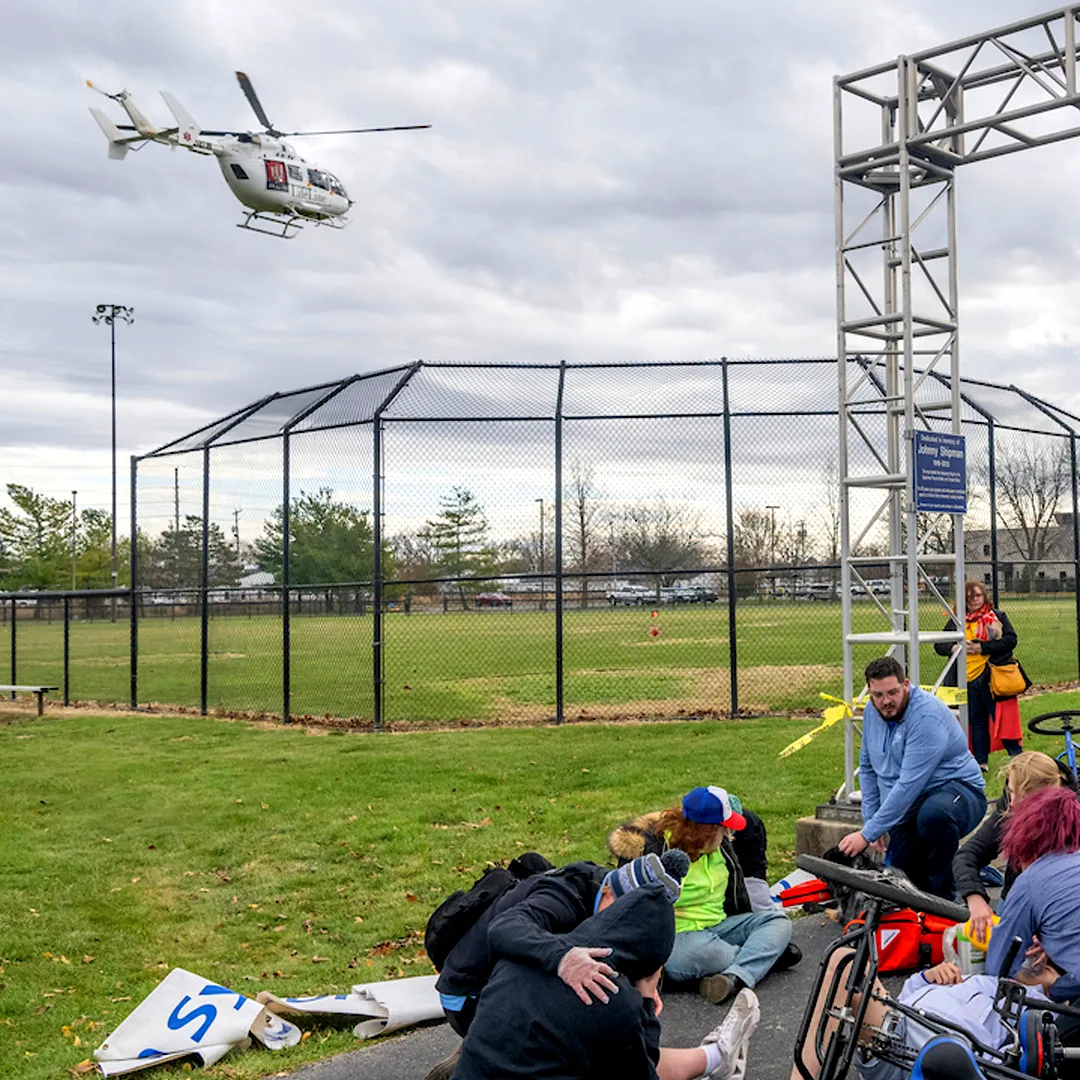
Simulations in the Indiana State University’s DAT program
What would a haunted house for athletic trainers look like? Lots of blood, compound fractures, and multiple patients?
Well if you’ve done your DAT at Indiana State University, it’s going to be tough to scare you. Check out this article from ISU’s Program Director, Dr. Lindsey Eberman, that showcases the simulations that their students experience and how their alum leverage that knowledge to further their careers.
By: Dr. Lindsey Eberman
In the early days of healthcare and medicine, the apprenticeship model was the go-to form of education. This was built on the idea of social learning, where folks can observe others, then mimic those skills and action with lots of repetitions. However, at the turn of the 19th century, Dr. William Osler, was characterized as the father of clinical education, in that he championed a clerkship model that taught medical students at the bedside.
However, over time, we realized that “just-in-time” teaching no longer met the needs of patients and we also needed a strong theoretical and practical foundation in the sciences to deliver high quality healthcare.
Enter, Abraham Flexner, who, although not a doctor, was one of the most impactful medical educators in the world. I’m sure this will come as a shock, but women, at this time, were sidelined for much of this emergence in medical education, being restricted from enrolling in medical schools, not just by the school’s charters, but also by the med doctors too. Women were left to train themselves, and were shut out of licensing and recognition among their men peers.
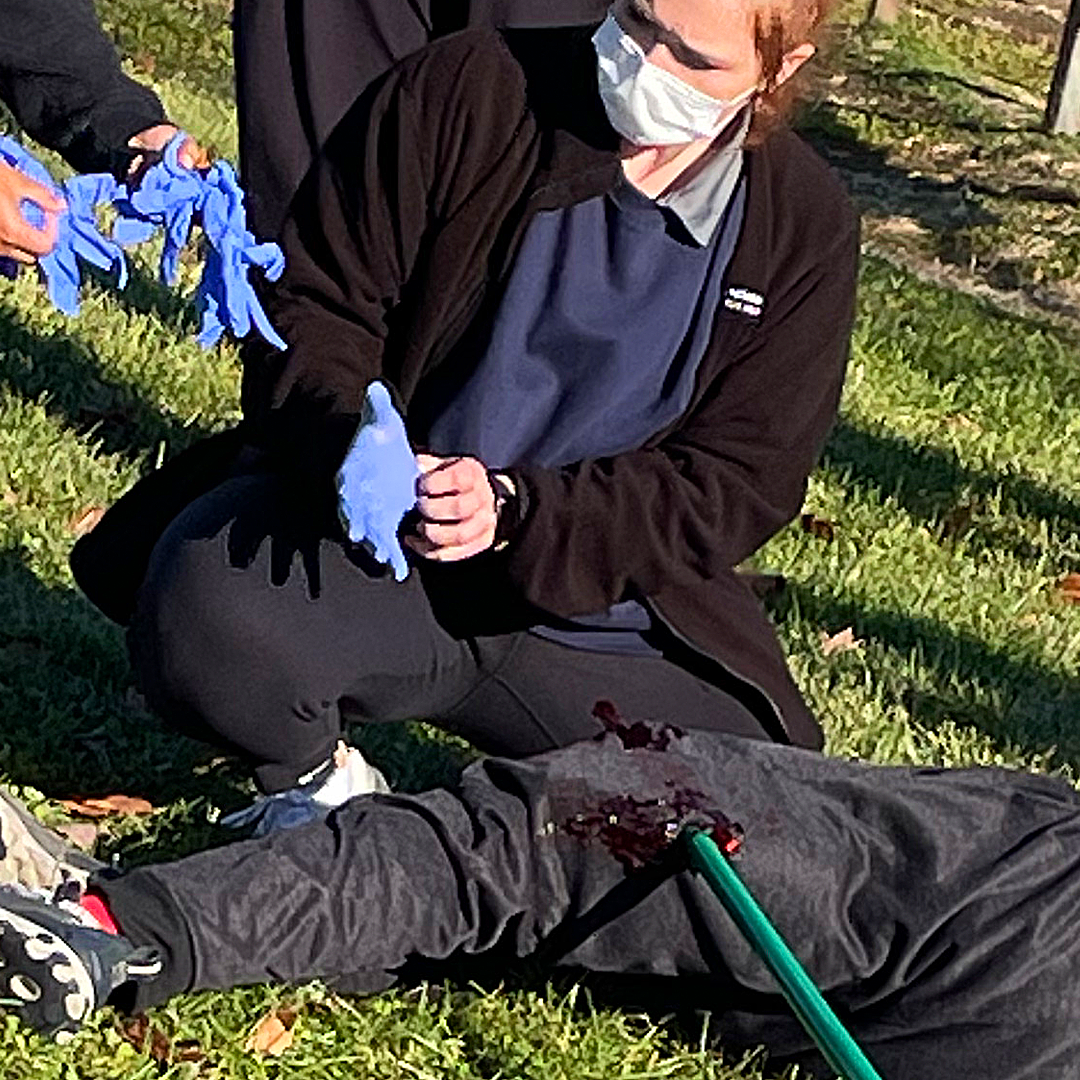
According to the Commission on Accreditation of Athletic Training Education, clinical education is broad, umbrella term that includes clinical experiences and simulation. Simulation is an educational technique to replace or amplify experiences that replicate the real world in a fully interactive manner.
Simulation includes things like mock patients, standardized patients, and structured clinical exams, some of which include high-technology simulators. Simulations have been part of the athletic training education vernacular since the early 2000s, but have become highlights of programs, professional, postprofessional, and residency, in the last several years.
Indiana State University Athletic Training has a long history of leveraging simulation in our educational programs, partnering with the Rural Health Innovation Collaborative Simulation Center to offer countless simulations to our students. Since my arrival at Indiana State, I’ve has used simulation as a centerpiece in teaching.
Among the most impactful, are the simulations, curated under my guidance by the postprofessional Doctorate in Athletic Training students. Students learn about the pedagogical practice of simulation, then work in groups to create and deliver a high-quality simulation to their classmates. And although not all simulations need to be mass casualty, many of them have been developed in that way; the reason being… students need an opportunity to practice high intensity health care in a safe way, so if they make mistakes, they can learn from them, grow, and ensure they do not make those mistakes when the real patients need care.
Indiana State Dat simulations have included what it is like to be in a tornado shelter, to treat patients having been struck by lightning, and several versions of active shooter drills. These simulations need environmental, psychological, and technical fidelity, meaning, they need to look and feel like a real life situation.
The partnership with the Simulation Center allows the students to use trained actors, moulage (makeup), part-task trainers (think gushing femoral artery), an ambulance, and most recently a Lifeline Helicopter to set the scene for their classmates. The groups prepare their classmates with a prebrief scenario, assign them roles and responsibilities, monitor and assess the learning during the simulation, and debrief them afterwards.
Because they are enrolled in an educator course, they are well prepared to articulate the learning outcomes of the simulation, ensuring their assessments match the goals they set at the outcome. Alum have found the ability to curate a simulation, an asset when applying for jobs. Many have secured titles like “Director of Continuing Professional Development” and “Continuing Education Coordinator” because they have a proven track record of being able to create and offer high quality learning to practicing professionals.
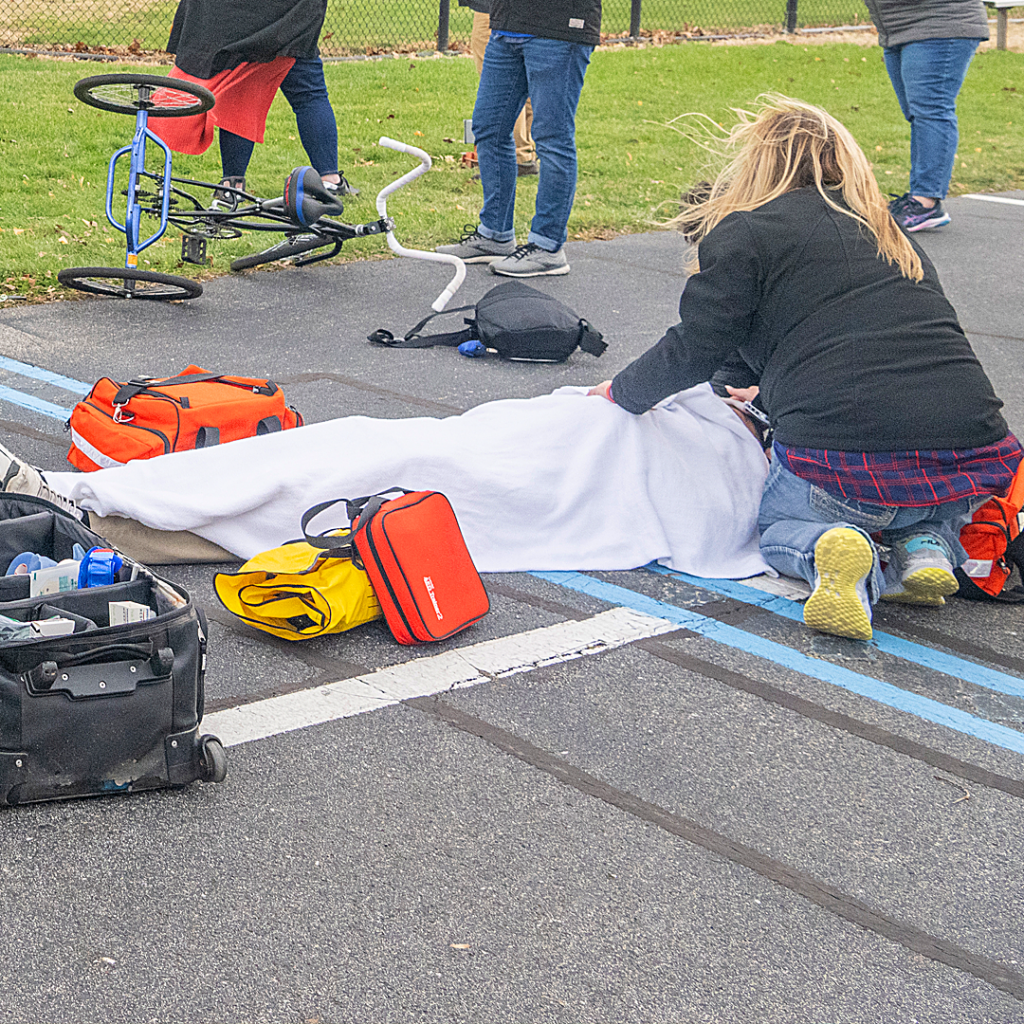
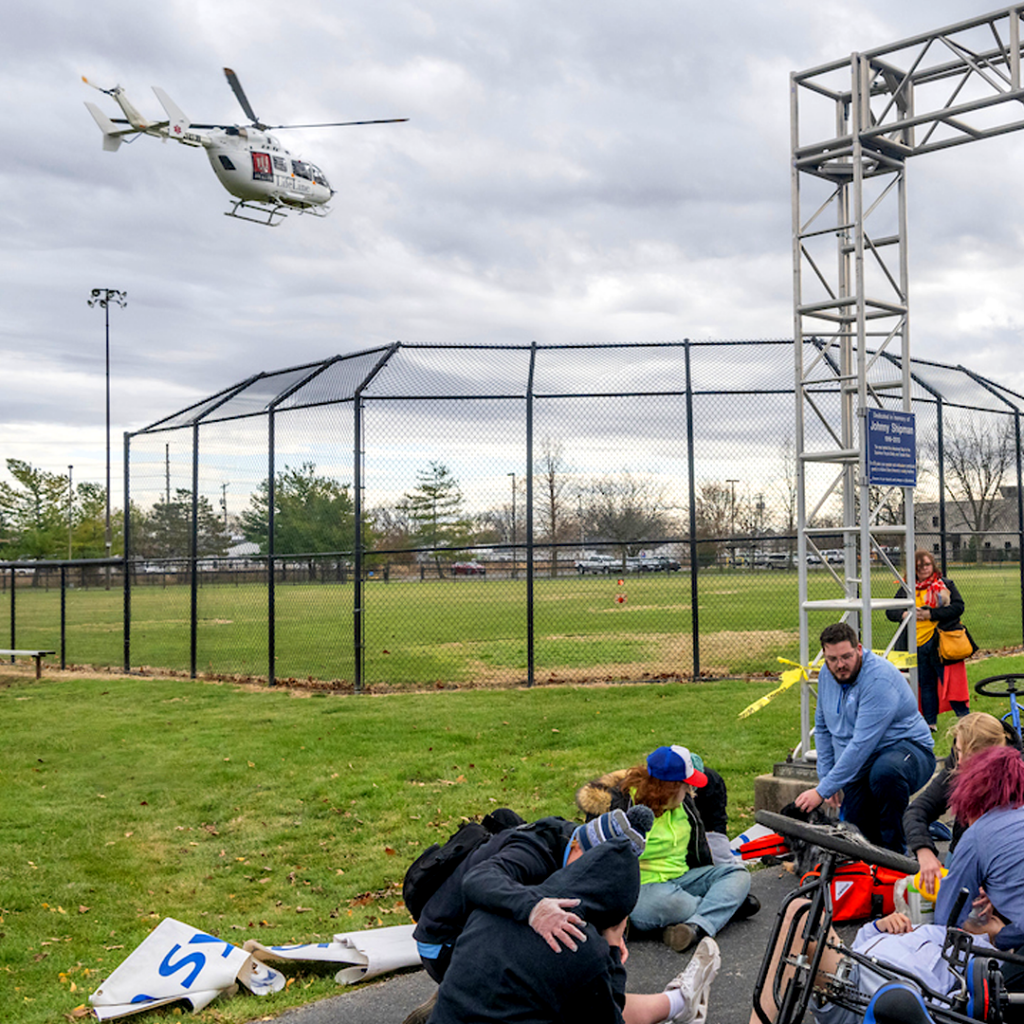
The program also delivers simulations to students, specifically, standardized patient encounters, that allow the DAT to monitor and evaluate the students’ development as an advanced practice clinician. This sets them apart from the other DAT programs, in that they use their focused-intensive learning weekends to ensure that what students are learning, they are also able to perform in as-close-to-real-life as possible.
These simulations have included interprofessional and collaborative practice with physical therapy, social work, and genetic counseling students. Among the most powerful experiences was a suicidal ideation simulation that had lasting impacts on alum.
To read more about what Dr. Eberman and her colleagues have done to enhance simulation in athletic training education, view this list of articles:
- Curation of a Simulation Experience by the Clinical Scholar: An Educational Technique in Postprofessional Athletic Training
- Simulation-Based Learning to Improve Athletic Trainers’ Knowledge of Exertional Sudden Death Conditions: A Pilot Study
- Long-Term Effect of Large-Scale Simulation Curation and Participation
- Perspectives of a Mental Health Emergency Standardized Patient Encounter: A Follow-Up Interview of Athletic Trainers
- Athletic Trainers’ Perceptions of Anxiety Before, During, and After a Standardized Patient Encounter
- The Confidence and Abilities to Assess a Simulated Patient Using Telemedicine
- Athletic Training Educators’ Perceptions of Using Standardized Patients in Teaching
- Advancement of Athletic Training Clinical Education Through Preceptor-Led Instructional Strategies
- Translation of Standardized Patient Encounter Performance and Reflection to Clinical Practice
- Postprofessional Learners’ Reflections After a Standardized Patient Encounter and Debriefing Session
- Integration of an Inclusive Health Care Curriculum for Sexual Health and Gender Minorities
Interested in getting your DAT from ISU? See if you qualify for in-state tuition and other perks through Go4’s preferred partnership program.
Are you an athletic trainer who works per diem? Create your free Go4 account. Access to the highest paying gigs near you. Sign Up. Pick a shift that meets your schedule and rate preferences. Work and get paid via direct deposit. It’s that simple.
"*" indicates required fields
Are you an Athletic Trainer?
Join us!
From per diem shifts to full-time opportunities, AT resources, PLI, a free EMR and more, Go4 is the essential AT app. Sign up now!
"*" indicates required fields
Other articles you might like

What’s the deal with Standing Orders?
How do I get standing orders as an athletic trainer? Q: What are standing orders? A: Standing orders, aka medical protocols, establish the scope of practice for an athletic trainer. Under the direction of a physician, they are an overview of the specific skills that the AT is legally able…
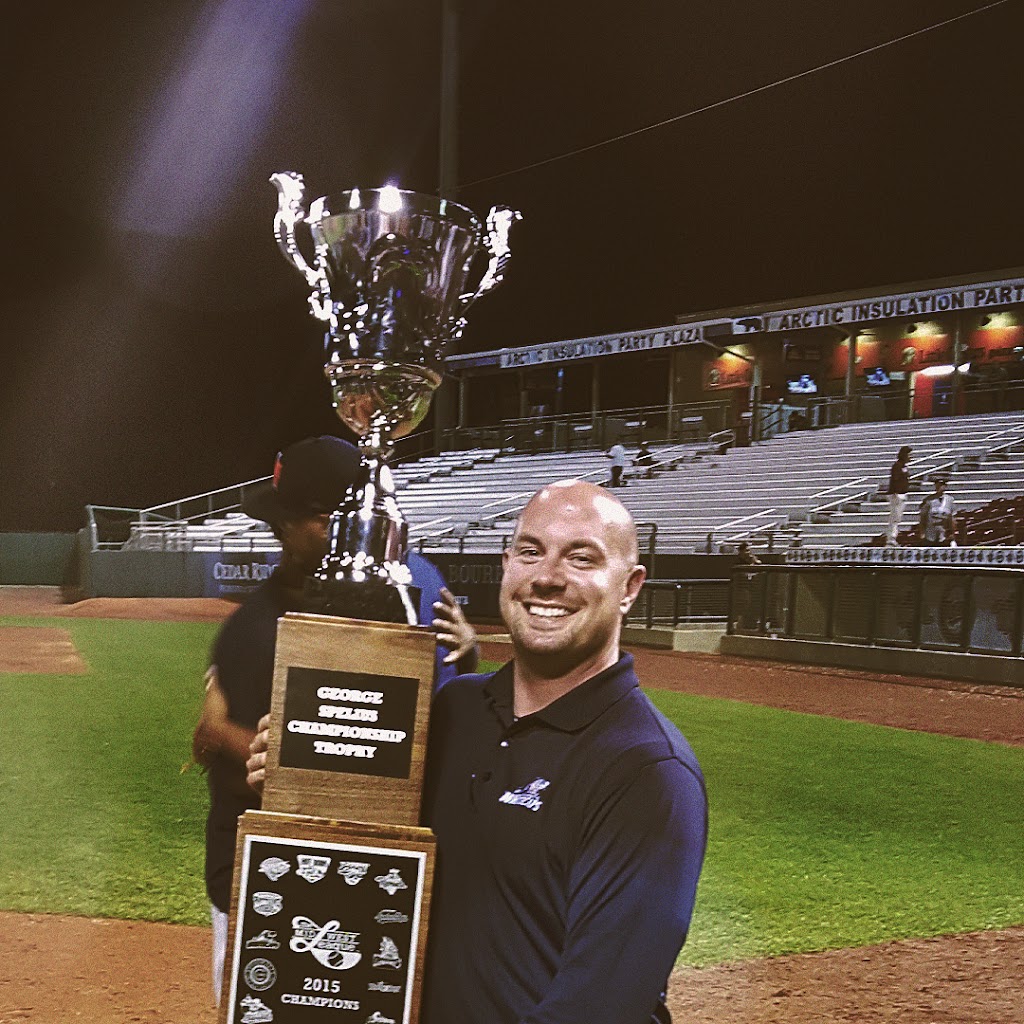
AT Spotlight: Thomas Obergefell, Athletic Training from the Dugout
Name: Thomas Obergefell, MS, ATC, LAT Nickname: T.J. Alma…
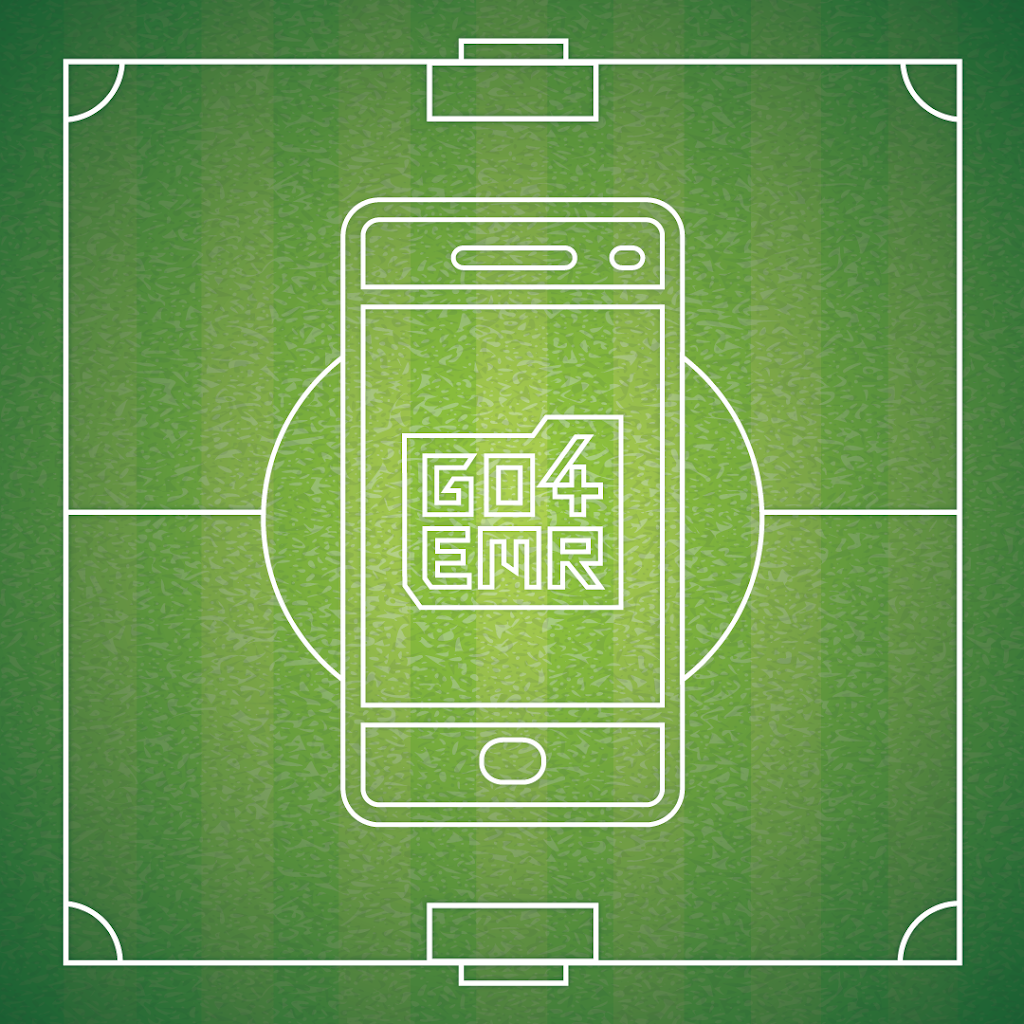
Middle School / High School / College / Any School EMR – The Importance of Documentation
Go4’s in-app Electronic Medical Record We all know the reasons why it’s important to thoroughly document, but incase you forgot, here they are:…